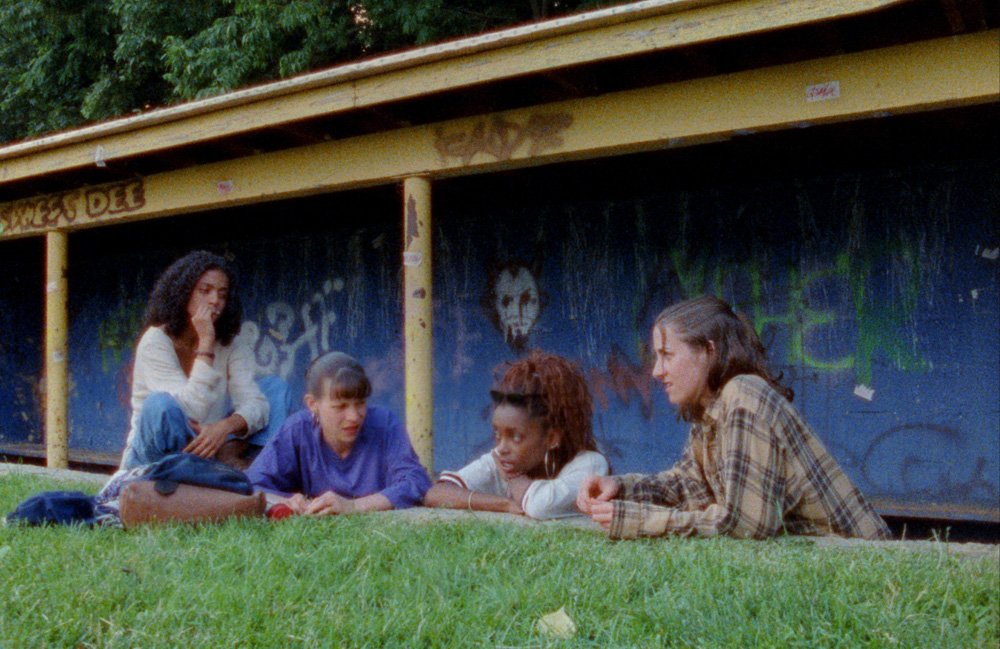There was only going to be one shot at a pivotal scene in “Girls Town” where friends Patti (Lili Taylor), Angela (Bruklin Harris) and Emma (Anna Grace) trash the car of the man they believe raped their friend Nikki (Aunjanue Ellis-Taylor), who took her life shortly after. Director Jim McKay had put together the budget himself, so there was only going to be one car to beat to beat up with baseball bats and tag with spray paint, and when the car was used in other scenes on the road, they couldn’t pick up a junker that was destined to be destroyed anyway.
“We discovered a lot of things while we were doing it, like sometimes you pick up a cinder block and throw it at a window and it actually doesn’t break the window,” says McKay. “So you have to figure out how you’re going to work around that, but it was a cathartic moment, and a fun part of [the production].”
Just a year shy of the 30th anniversary of its Sundance premiere, “Girls Town” continues to be a breath of fresh air, a product of taking chances in all respects that became a hallmark of one of America’s finest truly independent filmmakers in the years to come. While the deep well of humanity on display has become a distinguishing trait of McKay’s with such films as “Our Song,” “Everyday People” and “En El Septimo Dia,” all concerned with the marginalized finding the bits of terra firma they can build on as a foundation as they find where their power lies, he would be reluctant to call himself an auteur when he prizes a collective effort to make the films as dynamic as the communities you ultimately see reflected on screen. It remains striking to see all of the main actors in “Girls Town” also credited as writers when the script was only finalized after casting came together, leading to a bone-deep feeling of friendship amongst the quartet of young women who are devastated upon losing one of their set and set about getting revenge when Nikki’s left-behind journals point to a predator.
“If this was a movie, we would’ve shot a couple people,” Patti tells her friends confidently at one point in “Girls Town,” but in knowing that such solutions are hardly realistic or likely satisfying over the long haul, McKay opts for a different kind of action film in capturing the restlessness of the teens who are eager to do something, not only as it relates to comeuppance, but their lives as a whole in the suburbs, and gradually come to understand what they are and aren’t capable of. As would become a habit of McKay’s films, many of the fresh faces introduced in “Girls Town” would go on to have substantive careers when allowed to have such unforgettable performances in his work and when the film itself has been vibrantly restored to its original presentation by the good folks at IndieCollect, it really does hold as much currency today as it did when it first took Sundance by storm. On the eve of a rerelease that begins in New York this week before hitting theaters across the country, McKay spoke about the formative experience of making the film, finding his way to working with actors and letting life to come into the movie.
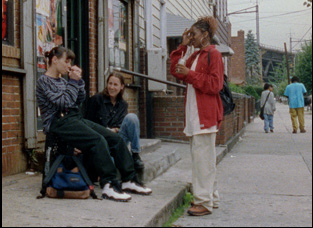
That’s a big question. It was super exciting and a long time coming. What happened was we put the film out in 1996, and we had a 25-year license with October Films and over the course of that time, the TV stations stopped renting it and streaming wasn’t around yet, so when streaming came, the film had already been shifted from one company to another to another with all these corporate mergers and no one said, “Hey, let’s put it online.” So it’s been unavailable to see for probably about 15 years. But I knew that that date was coming when I would get the rights back because I was basically the owner of the film and when the time came, I contacted Universal Pictures and got the materials back and I teamed up with Indie Collect, a nonprofit organization in New York that basically is dedicated to preserving independent films that have dropped off the shelves, and that process took a year-and-a-half.
It was great to go back and revisit the film and to be able to tweak it a little bit — when we made the film, I had never made a film and I had no idea this would get picked up and if so, I wasn’t going to be able to afford to blow it up to 35 millimeter. We could only afford shooting 16, so we framed it with the idea that maybe it would never get blown up, so it was shot in 16mm and we thought we’d show it in 16mm. But we did get the sale and when we blew up the film [to 35], it actually cut off the top and bottom of the frame because it widened it out. It was done well, but I was never really happy with that look, so I thought now that we’re back to where we are, let’s go ahead and put it back to where it was when it originally showed at Sundance Film Festival and we put it back into its original 1.37 frame.
We weren’t able to work on the sound as much as I wanted to because we couldn’t find the basic tracks anywhere. The sound company had gone out of business, but we were able to go in and sweeten it up using more modern digital tools, so it sounds better and it looks great. I didn’t want to perfect it too much. We got a lot of scratches and dust came off, but sometimes I just said, “Let’s keep it a little bit more real and keep that Kodachrome look going,” so that’s what we did. It’s great seeing it projected in a movie theater, which I’m hoping a lot of people get to go see it there and we’ll see what the response is.
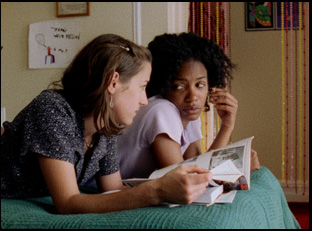
I didn’t know what the hell I was doing. [laughs] I really didn’t. But what I did know was I had an idea to make a movie and I had never written a screenplay. And I had never worked with actors. The movie was about teenage girls and I was never a teenage girl, so I knew that I had work to do in order to actually make this thing a good film. I was living down south at the time and I moved up to New York. I studied acting for about three years before the film was made, but about a year-and-a-half before we put the workshop together because I needed to know what is the process as an actor? What do you need to hear from a director, et cetera?
I had not gone to film school. I was completely self-taught. I knew about some directors who had worked with improv, a lot of them more just on set and allowing for a lot of improv during the process. Mike Leigh is famous for doing what is a very different process than what I did, but for finding actors, and then working with them first, and then writing the screenplay after working in sessions with them. I was intrigued by that and I knew a couple other people — Gordon Eriksen and Heather Johnston, who had made a film called “The Big Dis,” and they used that process. So I met with them, I read a lot and talked to different people.
Then we cast four actors to play the main characters that were written in this outline and we brought in other actors to play side characters and we just went through the outline scene by scene, one stitch at a time, putting together this story, discovering things about what it should be that weren’t down in the paper in the first place and things about the characters that didn’t really make sense now that we had gotten further on. It was a great process that lasted a couple of months and we ended up with 700 pages of transcripts from the videotapes of the workshops. Then I took that and I edited that down and just started writing rewrites based on that and I would also share those with the actors and they’d give feedback. We got to the point where we had the movie and a lot of people [watching it] feel like they’re improvising on camera in the film, but most of the time they’re not. They just did that previously and that’s how the dialogue came out, which was actually great for us on the shoot because the actors knew their stuff. They’re the ones who created it, so it helped once we were on set.
In an old interview, I had heard that one of the things that might’ve been eliminated during that process was the idea of any romantic relationships either between the women or with other guys. That now seems like a real distinguishing element of this.
I don’t remember that, but I’m sure it was something that was discussed. There is a beautiful little undercurrent of a certain amount of comfort that Emma and Nikki have at the beginning of the movie. But it was purposeful to not let the narratives of the male characters drive the film at any point. There’s a teacher who’s in the film who had a bigger part written and it just ended up not feeling right and it got cut way back and it almost feels like you’re in one of those Charlie Brown episodes where the offscreen parent is never seen or heard. But things changed every day. That’s what the process was for. If we felt like something didn’t feel right or there was a better direction to go in, [we’d do it] and it was a beautiful process. I think the result made for something that feels fresh in a lot of ways that a written piece doesn’t always.
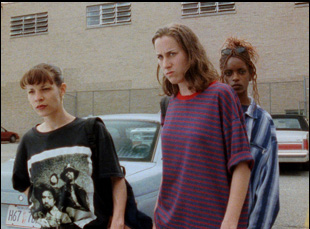
I knew that they could carry it. But no one was telling us what to do and it was a small piece with not a lot of people in the mix, so that felt right for that scene. And it’s more and more rare to actually see two human beings in the same frame. In TV in particular right now, [you’ll move from a] single shot of this person’s that goes out of this person’s single shot and when you film that way, it’s one thing to show it that way, but it’s also another [on set] when one actor knows they’re off-camera. The other actors knows that on camera, it’s a different process. The older I’ve gotten and the more I watch films, I cherish those scenes where you don’t [cut away]. It’s just as important to see people listening as it is to see people talking. That’s part of the performance and that’s part of the story and when you have one of those shots like that, that’s where that plays.Then at a certain time we decide, “Okay, let’s go into closer shots” and then we get very close because then it gets very intense. But I didn’t really know what I was doing too much. I had some ideas, and sometimes that’s a really great thing where you’re not worried about following the rules as much as following your instincts.
You have an amazing closing shot as well, just overhearing the women talk around the train tracks and there ends up being so much going on in the world around them. How did it come about?
We shot the film in New York City for the most part, in Queens. The idea was that it was supposed to present as like Any City, USA to some degree. We didn’t really go very far with New York City icons and for the most part, I think it could be Philadelphia or somewhere else. But at the end, we did need the dugout [where] there were all these scenes [of all the women hanging out], so I went back to where I went to high school in Hackensack, New Jersey. We shot for maybe just under two days out there and a lot of them were outside. We used the real students from the high school and that was great. And [for that final scene] the sun was going down. In one of the earlier takes, we realized, “The fireflies are coming out, the moon is out,” so we did have a plan at that point. Like at some point, let’s just leave our characters and go into the distance. We had done a couple of takes already, but we had no idea the train was coming. It was one of those beautiful serendipitous moments where they hear the train, and Russell Fine [the cinematographer] and I were looking at each other while we’re filming, going like, “When do we pan over?” It just worked out and it was a little free background excitement. And again, I think sometimes when you’re on a bigger production, there’s all this pressure to just get in there and stay on schedule one of the things about doing things small is that you can make some changes as you’re going.
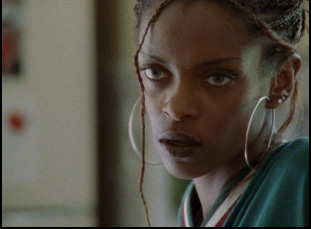
I didn’t think of them as [together] because I didn’t know if anyone would see this first one, but once people did, we connected with a lot of young people in the process. I had already been involved with some afterschool programs, and I went to school to be a teacher, so I had spent a lot of time in the classroom. But having made the movie, and then had the experience of putting it out, I felt I had another story I wanted to tell and I didn’t have to do an improv workshop with it. I felt I had down the language and the meter and a lot of people were like, “Jim, don’t do that.” And when I went to Sundance with “Our Song,” there were actually some things I heard people saying like, “Why is he making another movie about teenage girls?” But I just felt it was a natural extension. “Our Song” is a very, very, very different movie. But I wanted to explore that realm a little bit more and then two films later, I made a film [“Angel Rodriguez”] about a young man who’s in high school because I felt like at that point, I wanted to shift the focus and see what that brought up.
The thing that I love about all your work so much is it’s about people finding their power when they feel powerless and the small ways that they do that. Was there a point you knew that was enough to drive a movie?
I just love sitting in movie theaters and being overtaken by a story. I go to the theater sometimes five times a week. And for me, it’s the smaller stories that are subtle and quiet, where you can actually bring the viewer along with you on this ride and let them do some of the work, where they can watch and experience. They’re not told throughout the movie, this is the point of the movie, and take a lot of the exposition away. For me, a lot of the story is told in the quiet moments between people, in the pauses between sentences. That’s my version of the action movie is when someone actually just shuts down for a moment and then you go, “Whoa, it’s their turn to talk. “They’re not talking. “Well, what’s going on inside their head?” That’s what I like to watch, so that’s what I gravitated toward making.
“Girls Town” opens on January 17th in New York at the IFC Center, Washington D.C. at the Suns Cinema on January 22nd, the Guild Cinema in Albuquerque on February 8th, the SIFF Film Center in Seattle on February 28th, the Gateway Film Center in Columbus on March 8th and the Hollywood Theatre in Portland on April 7th.




